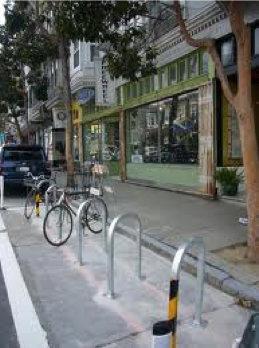Studies Show Better Bike Parking Improves Business
According to the SFMTA, in 2010 there were 8,713 bikes in San Francisco. Reset has covered the improvements in the works to make the city even more bike friendly — from new bike lanes to buffered bike lanes to bike sharing programs. We already knew that biking saved money and served as a stimulus to the local economy — but now we have even more studies to prove it. Several European studies show that better bike infrastructure, especially bike parking, can actually increase local urban stores’ revenue.
Scientists at the University of Wisconsin say more biking could stimulate local economies to the tune of $3.5 billion a year.
Bike Riders Spend More than Drivers
A study from the Dutch city of Utrecht found that even though bicyclists spend less on average per trip, they actually make more trips than drivers and thus spend the most money collectively. Furthermore, a German study found similar results, citing that bicyclists make on average eleven trips per month compared to seven for motorists. Swiss research into parking space profitability found that each square meter of bicycle parking generated €7,500 ($11,874) compared to €6,625 ($10,488) for cars. This research highlights how bike improvements outweigh losses incurred by having fewer car-driving customers.
Improvements to urban bicycle networks bring retail and economic benefits, yet another benefit to a more bikeable San Francisco. Better bike networks can also help people live less car-dependent lifestyles, which will increase the amount of discretionary income they can spend on things other than transportation. A Bay Area bike commuter could save between $6,677-$6,957 per year over owning a car. That’s a lot of extra cash to spend.
San Francisco businesses can request a free bike rack on the sidewalk.








